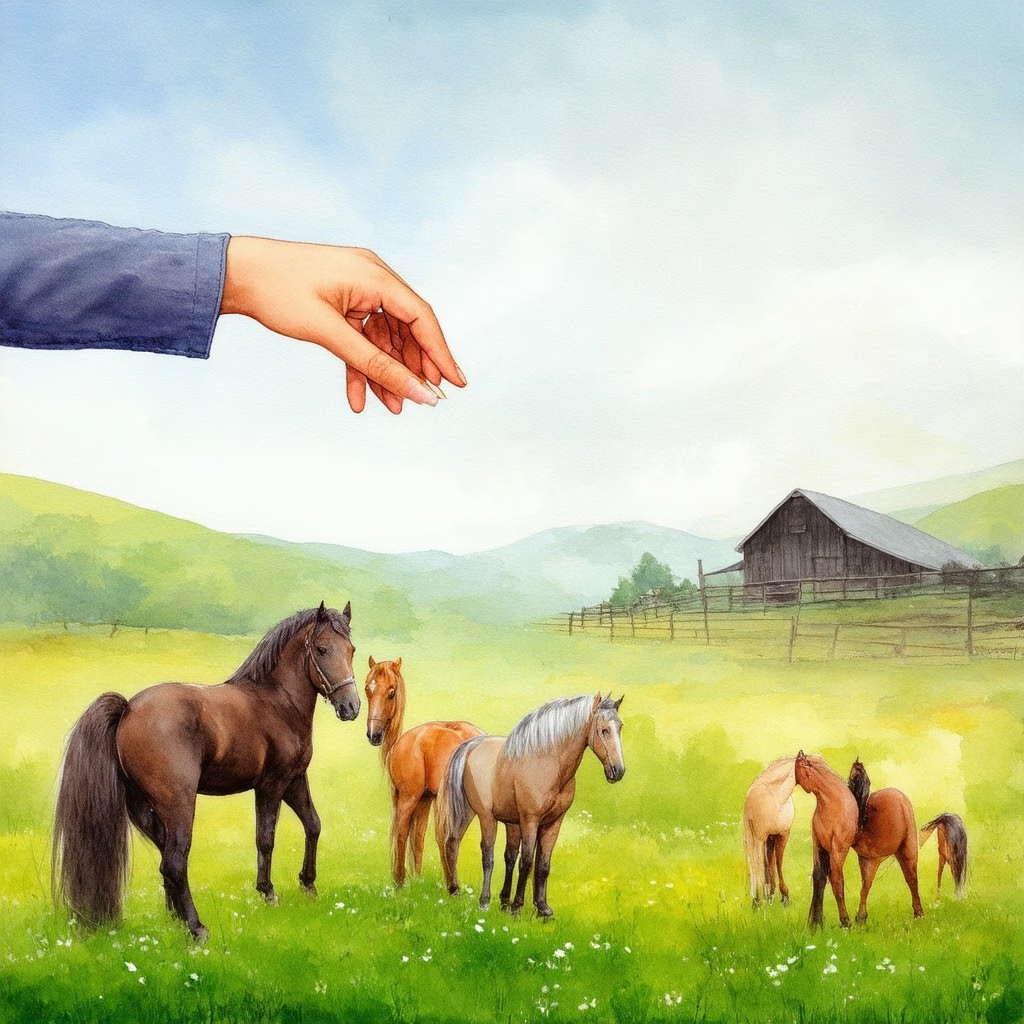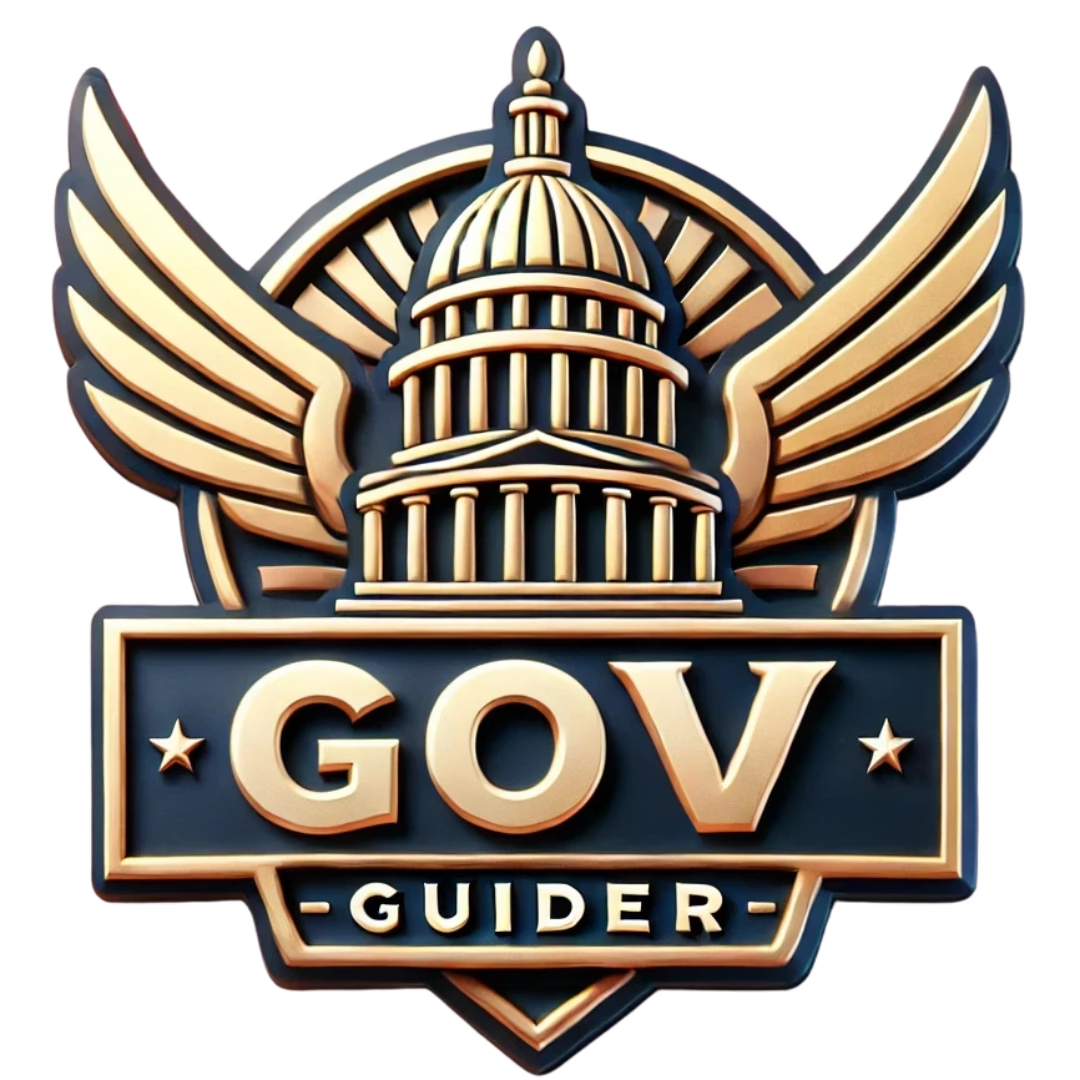Key Takeaways
- Federal equine grants are crucial funding sources for horse rescue, therapy programs, and equine farming initiatives.
- Understanding the application process for federal grants can significantly enhance your chances of securing funding for equine-related projects.
- Nonprofits can access specific federal equine grants designed to support rescue operations and therapy programs, helping to improve animal welfare.
- Effective grant writing is essential; detailed proposals showcasing need and impact can make a difference in funding approval.
- Equine therapy is recognized for its therapeutic benefits, and various grants are available to support these initiatives.
- Consulting resources like the USDA and Grants.gov can provide valuable information on available funding opportunities.
- Proper land and facility requirements are critical for establishing a successful horse rescue, ensuring the health and well-being of the horses.
- Future trends indicate a shift towards grants that promote community health and sustainable practices in equine facilities.
In the world of equine care and support, federal equine grants serve as a vital resource for organizations and individuals dedicated to horse rescue, therapy, and farming initiatives. This article, titled Navigating Federal Equine Grants: Essential Insights for Horse Rescue Funding, Equine Therapy Qualifications, and More, aims to illuminate the pathways to securing funding for various equine-related projects. We will explore the intricacies of federal grants, detailing how to obtain funding for a horse rescue and what qualifications are necessary for equine therapy programs. Additionally, we will delve into the different types of federal equine grants available, including those specifically designed for nonprofits and individuals. As we progress, we will provide essential grant writing tips, including examples of grant proposals that can enhance your chances of success. Furthermore, we will discuss the tax implications and benefits associated with these grants, as well as the land requirements for establishing a horse rescue. Finally, we will look ahead to future trends in equine grants, including upcoming opportunities from the USDA. Join us as we navigate the landscape of federal equine grants and uncover the funding opportunities that can make a significant difference in the equine community.
Understanding Federal Equine Grants
Federal equine grants are essential funding sources designed to support various equine-related initiatives, including horse rescues, therapy programs, and agricultural projects. These grants can significantly alleviate financial burdens, allowing organizations and individuals to focus on their mission of improving the welfare of horses and enhancing community engagement through equine activities. Understanding how to navigate these funding opportunities is crucial for anyone involved in the equine industry.
How to get funding for a horse rescue?
To secure funding for a horse rescue, consider the following comprehensive strategies:
- Fundraising Events: Organize events such as charity auctions, benefit dinners, and horse shows. These events not only raise funds but also increase community awareness about your cause. Collaborate with local businesses for sponsorships and donations.
- Online Crowdfunding: Utilize platforms like GoFundMe or Kickstarter to reach a broader audience. Share compelling stories and visuals of the horses you aim to rescue, emphasizing the impact of donations.
- Grants and Foundations: Research and apply for grants specifically aimed at animal welfare. Organizations like the ASPCA and the American Horse Council offer funding opportunities for equine rescue operations. Ensure your proposals are detailed and demonstrate the need for funding.
- Corporate Sponsorships: Approach local businesses and larger corporations for sponsorships. Many companies have corporate social responsibility (CSR) programs that support animal welfare initiatives. Offer to promote their brand at your events in return for their support.
- Membership Programs: Create a membership program where supporters can contribute a monthly fee in exchange for exclusive updates, merchandise, or invitations to special events. This fosters a sense of community and ongoing support.
- Social Media Campaigns: Leverage social media platforms to share your mission and success stories. Engaging content can attract followers who may be willing to donate or share your cause with their networks.
- Partnerships with Other Organizations: Collaborate with other animal welfare organizations to pool resources and share funding opportunities. Joint initiatives can enhance visibility and credibility.
- In-kind Donations: Seek in-kind donations of supplies, feed, and veterinary services from local businesses. Many equine supply stores are willing to contribute to rescue efforts.
For more detailed guidance on funding opportunities, you may refer to resources provided by the National Council of Nonprofits and the Foundation Center, which offer insights into grant writing and fundraising strategies.
What are federal grants?
Federal grants are financial awards provided by the federal government to support specific projects or initiatives that serve the public good. These grants do not require repayment, making them an attractive option for organizations and individuals seeking funding. Federal grants can cover a wide range of purposes, including education, health, agriculture, and animal welfare. Understanding what federal grants are and how they function is crucial for anyone looking to apply for funding.
Typically, federal grants are awarded based on a competitive application process, where applicants must demonstrate the need for funding and outline how the grant will be used effectively. Resources like Grants.gov provide comprehensive information on available federal grants, application procedures, and eligibility requirements. Additionally, exploring understanding government grants can further enhance your knowledge of the grant landscape.

Types of Federal Equine Grants
Understanding the various types of federal equine grants is essential for individuals and organizations looking to secure funding for equine-related projects. These grants can support a wide range of initiatives, from equine therapy programs to horse rescue operations. Below, we explore two significant aspects of federal equine grants: qualifications for equine therapy and specific grants available for nonprofits.
Who Qualifies for Equine Therapy?
Individuals who qualify for equine therapy typically include those facing a variety of mental, emotional, and behavioral challenges. The therapeutic benefits of interacting with horses can significantly aid clients dealing with:
- Depression and Anxiety: Research indicates that equine therapy can reduce symptoms of depression and anxiety by promoting emotional awareness and social interaction (Burgon, 2011).
- Phobias: The process of building trust with horses can help clients confront and manage their fears in a controlled environment (Kaiser, 2016).
- Dementia: Engaging with horses can stimulate cognitive function and improve mood in individuals with dementia, offering a unique form of sensory engagement (Friedmann et al., 2015).
- Post-Traumatic Stress Disorder (PTSD): Equine therapy has been shown to help veterans and others with PTSD by fostering a sense of safety and trust, which is crucial for healing (Barker & Dawson, 1998).
- Attention Deficit Hyperactivity Disorder (ADHD): The structured environment of equine therapy can enhance focus and self-regulation skills in children with ADHD (Harris, 2017).
- Addiction: Working with horses can provide a therapeutic outlet for individuals in recovery, helping them develop coping strategies and emotional resilience (Harris, 2017).
- Eating Disorders: Equine therapy can assist individuals in addressing body image issues and emotional regulation, which are often central to eating disorders (Burgon, 2011).
- Autism Spectrum Disorder: Children with autism can benefit from the non-verbal communication and social interaction that occurs in equine therapy, improving their social skills and emotional understanding (Gabriels et al., 2015).
Equine therapy is not limited to these conditions; it can also be beneficial for individuals seeking personal growth, stress relief, or improved interpersonal skills. For more information on the therapeutic benefits of equine therapy, you can refer to resources from the American Hippotherapy Association and the Equine Assisted Growth and Learning Association.
Federal Equine Grants for Nonprofits
Nonprofit organizations play a crucial role in the equine sector, often providing essential services such as horse rescue, rehabilitation, and therapy programs. Federal equine grants for nonprofits are designed to support these initiatives, enabling organizations to expand their reach and impact. Some key sources of funding include:
- USDA Grants: The USDA offers various grants aimed at supporting equine-related projects, including USDA grants for farmers that can be applied to equine therapy and rescue operations.
- Equine Grants: Specific federal equine grants are available for nonprofits focused on equine therapy and rescue, which can help cover operational costs, facility improvements, and program development.
- Grant Writing Resources: For nonprofits seeking funding, understanding how to craft a compelling grant proposal is essential. Examples of grant proposals can provide valuable insights into successful applications.
By leveraging these federal equine grants, nonprofits can enhance their programs and provide vital services to those in need, ultimately contributing to the welfare of both horses and individuals seeking assistance.
Grant Writing Essentials
When seeking federal equine grants, mastering the art of grant writing is crucial. A well-crafted grant proposal can significantly enhance your chances of securing funding for initiatives such as horse rescues or equine therapy programs. Understanding the components of a successful proposal is essential for anyone looking to access federal grants or USDA grants.
Can You Get a Scholarship for Horses?
Yes, you can get a scholarship for horses, particularly through various equestrian programs and organizations. Here are some notable options:
- USEF Equestrian Scholarships: The United States Equestrian Federation (USEF) offers several scholarships aimed at high school seniors who plan to pursue higher education while continuing their involvement in equestrian activities. For instance, they provide five scholarships of $1,000 each to students who demonstrate a commitment to equestrian sports and academic excellence.
- College Equestrian Programs: Many colleges and universities with equestrian programs offer scholarships to attract talented riders. Institutions like the University of Kentucky and Oklahoma State University have dedicated funds for students who excel in equestrian disciplines. These scholarships often require participation in the school’s equestrian team.
- Local and Regional Equestrian Organizations: Numerous local equestrian clubs and regional organizations provide scholarships to support young riders. These scholarships may be based on competition results, community involvement, or financial need.
- Equestrian Associations: Organizations such as the American Quarter Horse Association (AQHA) and the United States Pony Clubs (USPC) offer scholarships for members pursuing higher education. These scholarships often require applicants to demonstrate their involvement in the organization and their commitment to the equestrian community.
- Equestrian Sports Competitions: Some equestrian competitions and events offer scholarship opportunities as part of their prize packages. Riders who perform well in these events may qualify for financial assistance to help with their education.
For more information on available scholarships, students can visit the official websites of these organizations or consult their school’s guidance counselor for additional resources.
Example of a Grant Proposal
Creating a compelling example of a grant proposal is vital for securing funding through federal equine grants. A typical grant proposal should include the following sections:
- Executive Summary: A brief overview of your project, including its purpose, goals, and the amount of funding requested.
- Statement of Need: Clearly articulate the problem your project addresses and why it is important. Use data and statistics to support your claims.
- Project Description: Detail the project’s objectives, activities, and timeline. Explain how you will implement the project and measure its success.
- Budget: Provide a detailed budget that outlines how the funds will be used. Include any matching funds or in-kind contributions.
- Organization Information: Describe your organization’s mission, history, and capacity to carry out the project.
For those looking for grant writing examples, reviewing sample grant proposals can be incredibly helpful. These resources can guide you in structuring your proposal effectively and ensuring that all necessary information is included.
Funding Opportunities for Equine Therapy
Equine therapy has gained recognition for its therapeutic benefits, leading to an increase in funding opportunities. Understanding how to access these resources can significantly enhance the viability of equine therapy programs. This section explores the potential for insurance coverage and grants specifically designed for equine therapy initiatives.
Does insurance pay for equine therapy?
Insurance coverage for equine therapy can vary significantly based on individual plans and state regulations. While equine therapy is not typically listed as a standalone treatment in most traditional health insurance policies, it may be covered under broader mental health and addiction treatment provisions.
- Mental Health Coverage: Many insurance plans include provisions for alternative therapies that support mental health treatment. Equine therapy, recognized for its benefits in treating conditions such as PTSD, anxiety, and depression, may qualify under these provisions.
- State-Specific Policies: If you are enrolled in Medicaid, it’s crucial to check your state’s specific policies regarding equine therapy. Some states may offer coverage for equine-assisted therapy as part of their mental health services, while others may not. The National Conference of State Legislatures (NCSL) provides resources to help navigate these state-specific regulations.
- Documentation and Referrals: To increase the likelihood of coverage, obtaining a referral from a licensed mental health professional can be beneficial. Documentation that outlines the necessity of equine therapy as part of a comprehensive treatment plan may also support your case for insurance reimbursement.
- Consulting with Providers: It’s advisable to contact your insurance provider directly to inquire about coverage options for equine therapy. They can provide detailed information regarding what is covered, any necessary documentation, and the claims process.
- Resources for Further Information: For more detailed guidance on insurance coverage for equine therapy, you can refer to resources such as the American Psychological Association (APA) and the Equine Assisted Growth and Learning Association (EAGALA), which offer insights into the therapeutic benefits and potential insurance implications of equine therapy.
Grants for equine therapy programs
In addition to insurance coverage, various grants are available to support equine therapy programs. These federal equine grants can provide essential funding for nonprofits and individuals looking to establish or enhance equine-assisted therapy initiatives.
- Federal Equine Grants: Programs such as USDA grants offer funding opportunities specifically for equine therapy. These grants aim to support mental health initiatives and promote the therapeutic use of horses.
- Grants for Nonprofits: Many federal and state grants are available for nonprofits that focus on equine therapy. These grants can help cover operational costs, training for therapists, and facility improvements. For more information, visit Federal grants for nonprofits.
- Examples of Grant Proposals: When applying for funding, having a well-structured grant proposal is crucial. A sample grant proposal can serve as a valuable reference to ensure your application meets the necessary criteria.

Tax Implications and Benefits
Understanding the tax implications and benefits associated with federal equine grants is crucial for anyone involved in equine rescue or therapy programs. These grants can provide significant financial support, but it’s essential to navigate the tax landscape effectively to maximize your benefits.
Is a horse rescue a tax write off?
Yes, a horse rescue can qualify as a tax write-off under certain conditions. If you are involved with a qualified 501(c)(3) nonprofit organization that focuses on rescuing and rehabilitating horses, you may be eligible to deduct unreimbursed expenses incurred while caring for these animals. This includes costs for food, veterinary care, and other necessary supplies directly related to the rescue efforts.
However, it’s important to note that expenses related to personal animal care or rescue efforts conducted independently without the affiliation of a recognized nonprofit organization are not tax-deductible. The IRS stipulates that only contributions made to qualified organizations can be claimed as charitable deductions. For more detailed guidance on tax deductions related to animal rescues, you can refer to IRS Publication 526, which outlines the rules for charitable contributions. Additionally, consulting with a tax professional can provide personalized advice based on your specific situation.
Grants for starting a horse business
Starting a horse business can be a rewarding venture, and various federal equine grants are available to support your efforts. These grants can help cover initial costs such as purchasing horses, building facilities, or funding operational expenses. The USDA offers specific USDA grants for farmers that can be utilized for equine-related businesses, including those focused on breeding, training, or therapeutic riding programs.
When applying for these grants, it’s essential to prepare a strong grant proposal. A well-crafted grant writing sample can significantly increase your chances of securing funding. Consider including examples of grant proposals that highlight your business plan, the impact of your work, and how the funds will be utilized effectively. For more insights on grant writing, explore grant writing examples that can guide you through the process.
Land Requirements for Horse Rescues
When considering the establishment of a horse rescue, adequate space is crucial for the health and well-being of the horses. Here are the key facility requirements:
- Pasture Space: A minimum of 1 fenced acre per horse is recommended to ensure that each horse has sufficient room to roam, graze, and engage in natural behaviors. This space allows for proper exercise and reduces stress among the animals.
- Shelter: Each horse should have access to a shelter that protects them from harsh weather conditions. This can be a barn or a run-in shed, which should be well-ventilated and spacious enough to accommodate the horses comfortably.
- Water Supply: A reliable source of clean, fresh water is essential. Horses require approximately 5 to 10 gallons of water per day, depending on their size and activity level.
- Fencing: Secure fencing is vital to keep horses safe from predators and prevent them from escaping. Recommended fencing types include wood, vinyl, or high-tensile wire, ensuring it is at least 4-5 feet high.
- Pasture Management: Regular maintenance of pastures is necessary to prevent overgrazing and to promote healthy grass growth. Rotational grazing practices can help maintain pasture quality.
- Waste Management: An effective waste management system is important for maintaining a clean and healthy environment. This includes regular removal of manure and proper disposal methods.
- Access to Veterinary Care: Proximity to veterinary services is essential for routine health checks, vaccinations, and emergency care.
According to the American Society for the Prevention of Cruelty to Animals (ASPCA), these requirements are fundamental to creating a safe and nurturing environment for rescued horses. Additionally, local regulations may vary, so it’s advisable to consult local zoning laws and guidelines to ensure compliance with any specific requirements for horse rescue facilities.
How Many Acres Do You Need for a Horse Rescue?
The acreage needed for a horse rescue can vary based on the number of horses and the type of care provided. Generally, the guideline of one acre per horse is a good starting point. However, if the rescue aims to provide extensive rehabilitation or training, additional space may be necessary. For example, if you plan to rescue ten horses, a minimum of ten acres would be ideal to ensure they have adequate space for grazing, exercise, and social interaction.
In addition to pasture space, consider the layout of the land. Having separate areas for different groups of horses, such as those in rehabilitation versus those that are ready for adoption, can help manage their needs effectively. Furthermore, access to trails or open spaces for riding can enhance the quality of life for the horses and provide opportunities for training and exercise.
Grants for Horse Farms
Funding opportunities are available for those looking to establish or expand horse farms, including federal equine grants. These grants can assist with purchasing land, building facilities, and maintaining operations. The USDA offers various USDA grants specifically aimed at farmers, which can include equine operations. Additionally, exploring Grants.gov can provide access to federal grants tailored for agricultural projects, including horse farms.
For those interested in applying for funding, it’s essential to prepare a detailed grant proposal sample that outlines your project, including land requirements, facility plans, and the intended use of funds. This will enhance your chances of securing the necessary financial support to create a successful horse rescue or farm.
Future Trends in Equine Grants
Grants for Equine Facilities 2025
As we look towards 2025, the landscape of federal equine grants is evolving to meet the growing demand for equine facilities that support therapeutic and recreational activities. These grants are increasingly focused on improving access to equine therapy, enhancing the quality of facilities, and promoting sustainable practices within the equine industry. Federal equine grants are expected to prioritize projects that demonstrate a clear benefit to community health and well-being, particularly in underserved areas.
Organizations seeking funding for equine facilities should prepare to showcase how their projects align with federal priorities, such as community engagement and environmental sustainability. For example, grants may be available for constructing new barns, arenas, or rehabilitation centers that incorporate green technologies. The USDA is likely to play a significant role in this funding, offering specific programs aimed at enhancing equine facilities through its various grant initiatives.
USDA Grants for New Farmers
USDA grants for new farmers are an essential resource for those entering the equine industry. These grants are designed to support individuals who are starting their agricultural careers, including those focused on equine-related businesses. The USDA provides funding opportunities that can help cover costs associated with purchasing land, equipment, and livestock, as well as operational expenses.
New farmers can access various USDA programs, including the Beginning Farmer and Rancher Development Program, which offers grants for training and education. Additionally, the USDA’s National Institute of Food and Agriculture provides resources and funding aimed at fostering innovation in farming practices, including those related to equine management. By leveraging these grants, new farmers can establish sustainable equine operations that contribute to the broader agricultural economy.
For more information on federal grants, including those specifically for equine facilities and new farmers, visit the [USDA official site](https://www.usda.gov) and explore the [Grants.gov](https://www.grants.gov) portal for comprehensive grant listings.




